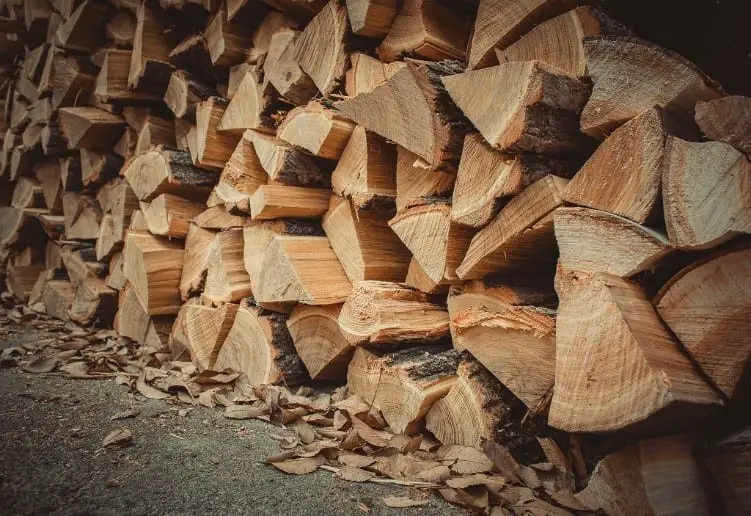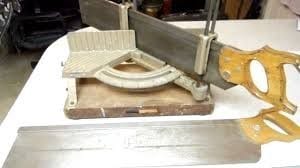Have you ever wondered how to use a layout square? A layout square or a speed square is a measuring tool used in woodworking as well as in other industries. It is a basic measuring device that is very useful in creating balance in any woodworking project. The layout square has a simple yet very efficient design; it is also versatile since it can be used in many kinds of projects. And this measuring tool may only look like just a ruler but it can actually be used in five different ways.
But before we learn about how to use a layout square, first you must learn about the different parts of this device to understand how it can be used in woodworking.

A layout square is shaped like a triangle-shaped marking tool. It is right triangle with a ruler on one equal side and a fence on the other side. The speed square manufactured by Swanson Tool Co., Inc. has a word “Pivot” found at the right angle point and the word “Degrees” found on its hypotenuse. The words “Common” and “Hip/Val” labelled on the tool’s midsection.
A layout square can be made of aluminum, stainless steel or composites and is available in two sizes: a 7-inch model for small to moderate-sized projects and a 12-inch model for larger projects. There are layout squares made of high-impact polystyrene which is one of the most durable materials of all.
- The “Degree” tells the angle in degrees from 0 degrees to 90 degrees
- The “Common” indicates the increase in inches over a 12-inch run ideal for common rafters from 1 inch to 30 inches
- The “Hip/Val” indicates the increase in inches over a 17-inch run ideal for hip and valley rafters from 1 inch to 30 inches
Layout squares have 1/4 –inch spaced notches to make scribing easier. It has bold graduations that let you read the numbers and measurements easier. Most layout squares have a matte finish to reduce glare and resist dirt and grime.
More updated features like a magnetic surface, built in block levels, diamond-shaped cut-outs for creating common rafters and improved materials are now available. But no matter what kind of material and updated features, all layout squares basically have the same functions. It can be used as a combination square, try square, framing square, saw guide and miter gauge.

Layout square as a try square
One way to make accurate cross cuts is to use a layout square. This measuring tool can create baseline markings on any surface, like a wooden plank or workpiece. This baseline will be used to create cross sectional cuts without missing a single centimeter. Simply place the layout square on the piece to be cut and place marks with the use of a pencil. You can also use the tool as a guide in cutting or sawing a workpiece to create a perfect crosscut piece.
Layout square as a saw guide
Most layout squares are made of very durable material like stainless steel, aluminum and plastic resin making these perfect as saw guides. It can be placed against the wooden workpiece that needs to be cut with a hand saw or a power saw. You rest assure that you will have the perfect cut all the time when you use a layout square as you but your workpiece.
Layout square as a miter gauge
A layout square can be used as a miter gauge so you can guide a power saw, table saw or a band saw to cut at a certain angle. The square can also work with stationary disk sanders so that finishing can be done perfectly on a particular angle. No matter how complicated or how tough finishing and cutting may be, a layout square will be able to make cutting easy and with less mistakes as possible.
A layout square as a framing square
There is no doubt that a layout square will make accurate frames faster and with fewer mistakes. A layout square already measures 90 degrees so it won’t be too hard to connect two pieces together to create a perfect corner. And no matter how large your frames are there is a layout square that will fit the job. A large 12-inch model will work more efficiently with larger projects.
Layout square as a combination square
A square can also be used as a combination square which is a tool for woodworking, metalworking and stonemasonry. A combination square has a removable and interchangeable head. Just like a combination square, a layout square can be used to measure angles from 90 and 45 degree angles, to check for flatness from a reference surface, to measure the center of a circular bar or dowel, as a protractor, for marking a workpiece or to find the center of a piece or a surface. A layout square can be used for all these jobs and maybe for even more uses depending on the project.
Using a layout square in checking for flatness
A good flat surface such as the top of a table, a deck or a floor should be flat and aside from using a bevel to check each and every centimeter of the piece, you can use a layout square. Simply hold the measuring tool against the surface to be tested and check for any irregular light coming between the square and the surface. More irregular light could mean that the surface needs more sanding or planning to finally achieve a flat surface. Less light passing through means that the surface could be flat.
Maintaining and cleaning a layout square
Most woodworkers would simply keep their square without actually cleaning or maintaining it. A layout square is simple and may need no maintenance at all. But consider that a square comes into contact with different kinds of material and even workpieces with paint, varnish and dirt. These could affect the way a layout square measures. Therefore cleaning should never be overlooked after every project. Simply wiping the surface of the layout square will make it ready for the following day’s work.
Conclusion
The layout square is one of the most hardworking measuring tools and devices used by woodworkers. It has a simple design and is very versatile making it a good measuring tool for creating frames, as a cutting guide or miter guide and a combination tool and try square. And just like all other woodworking tools, the layout square must be cleaned and maintained so that it can perform efficiently the next time.
Do you have a few suggestions about using a layout square? We love to hear it. You may use the comment section below for your suggestions. If you love this article share it with people you know needs help in using a layout square.







